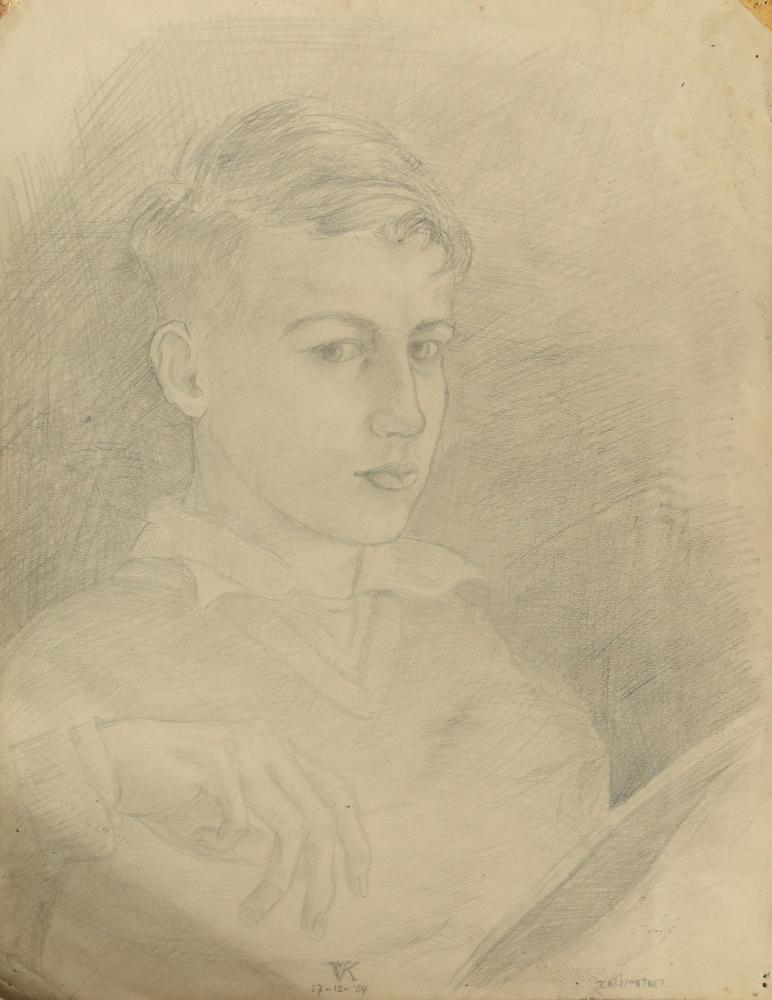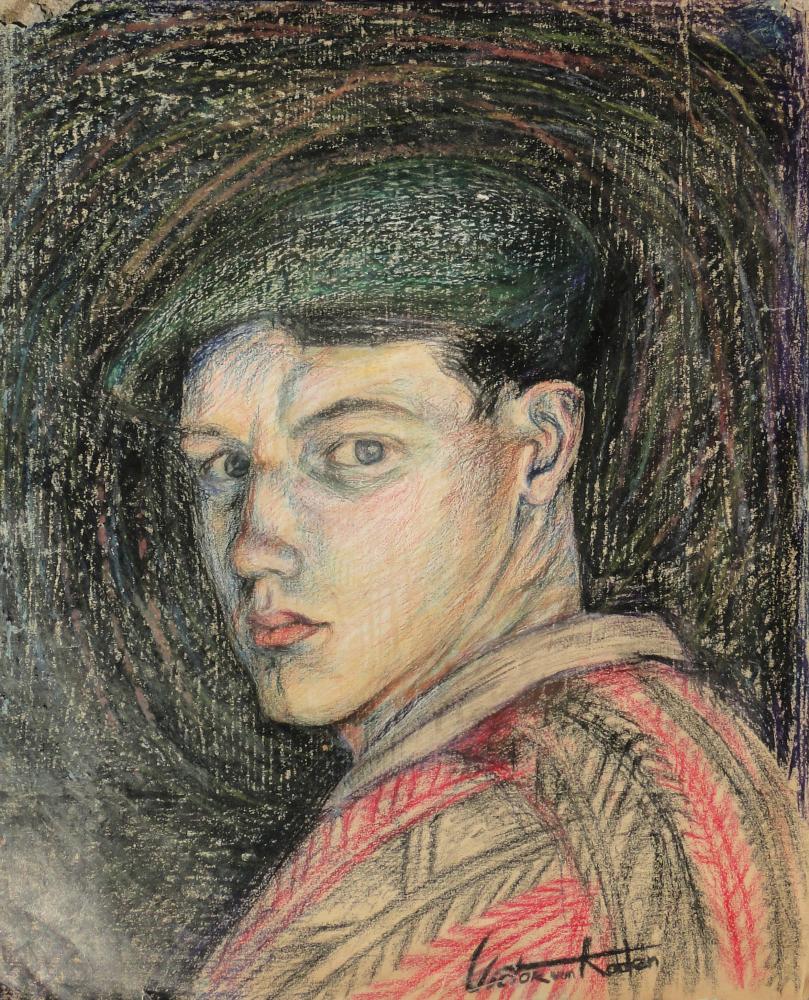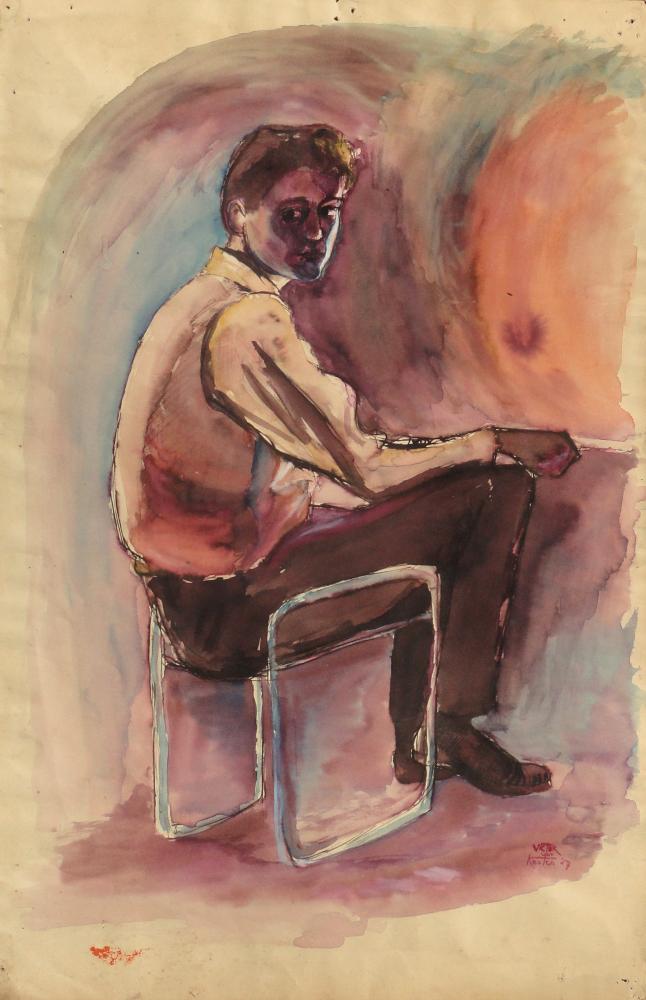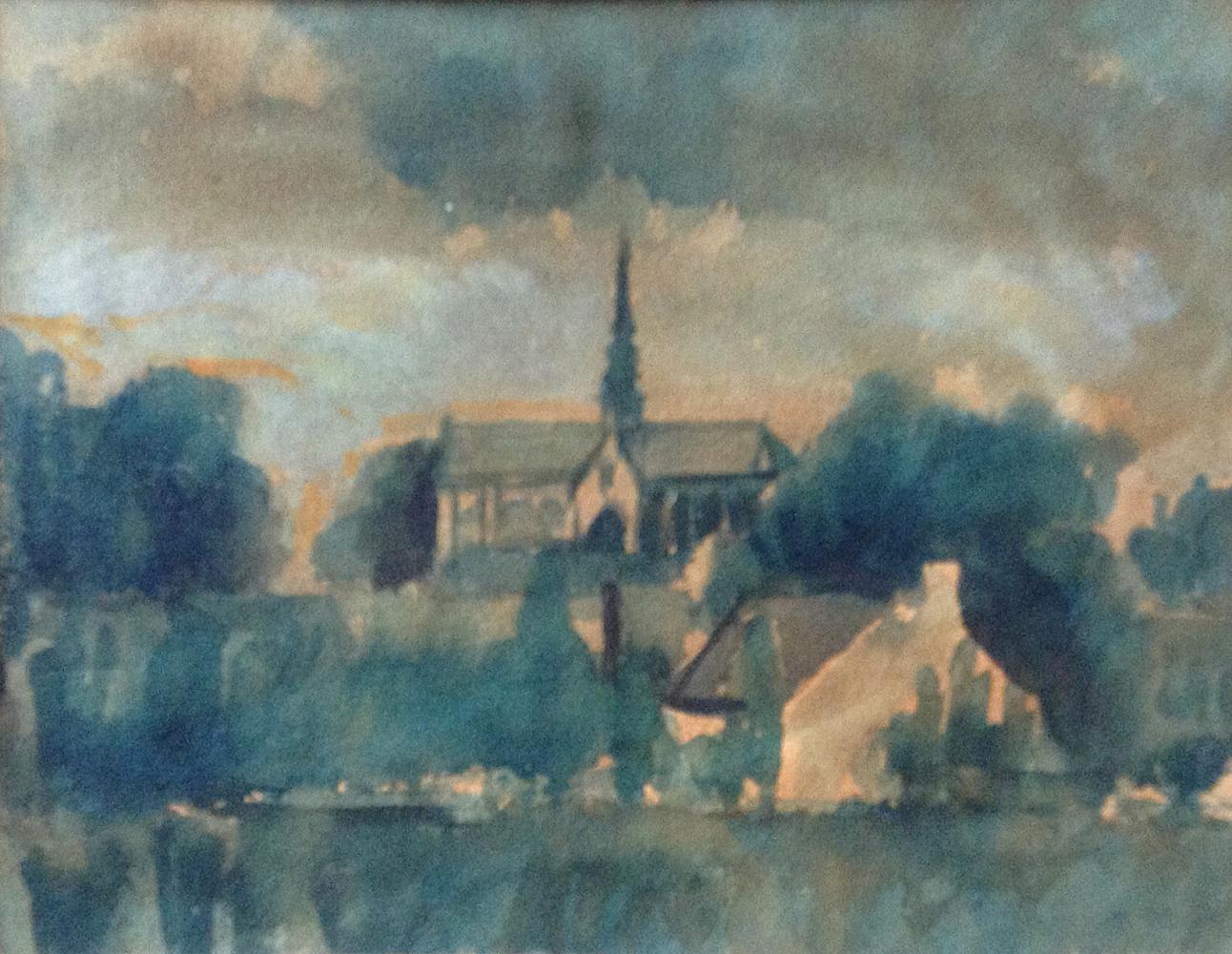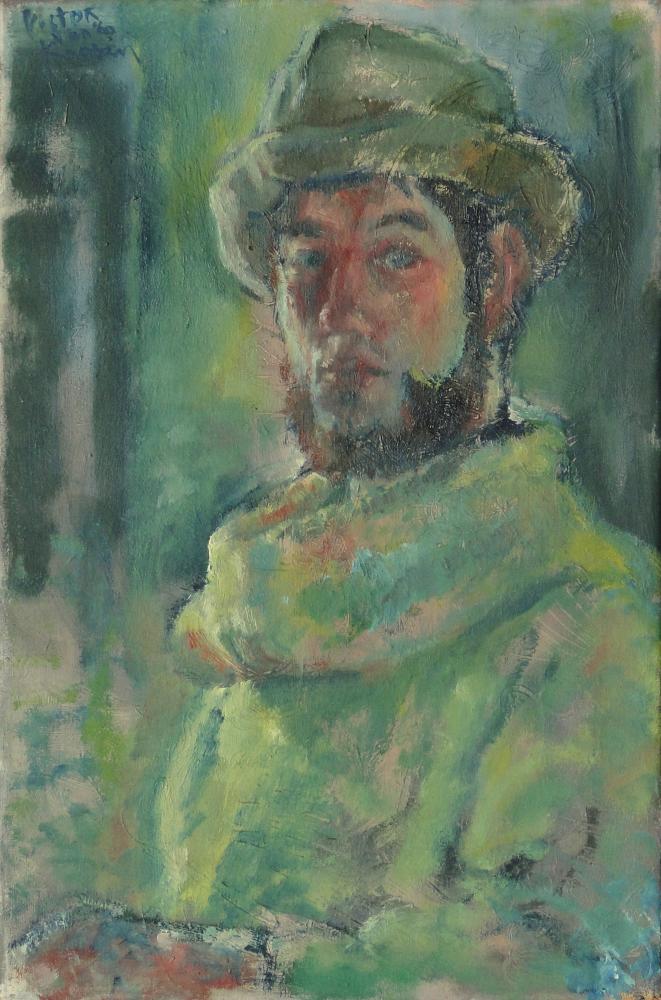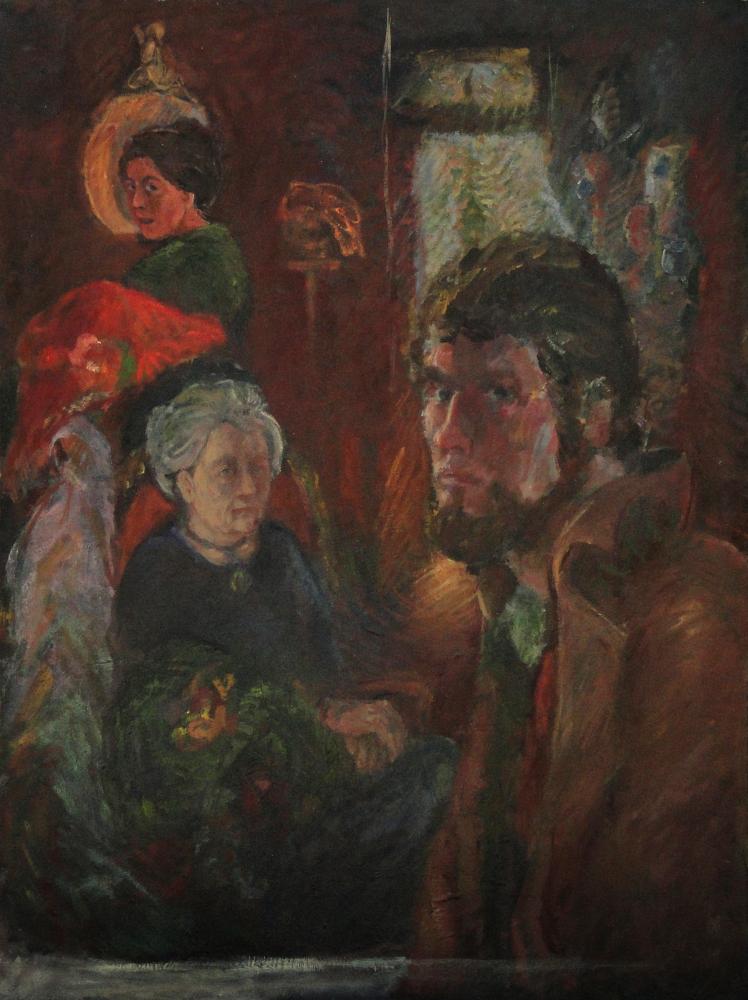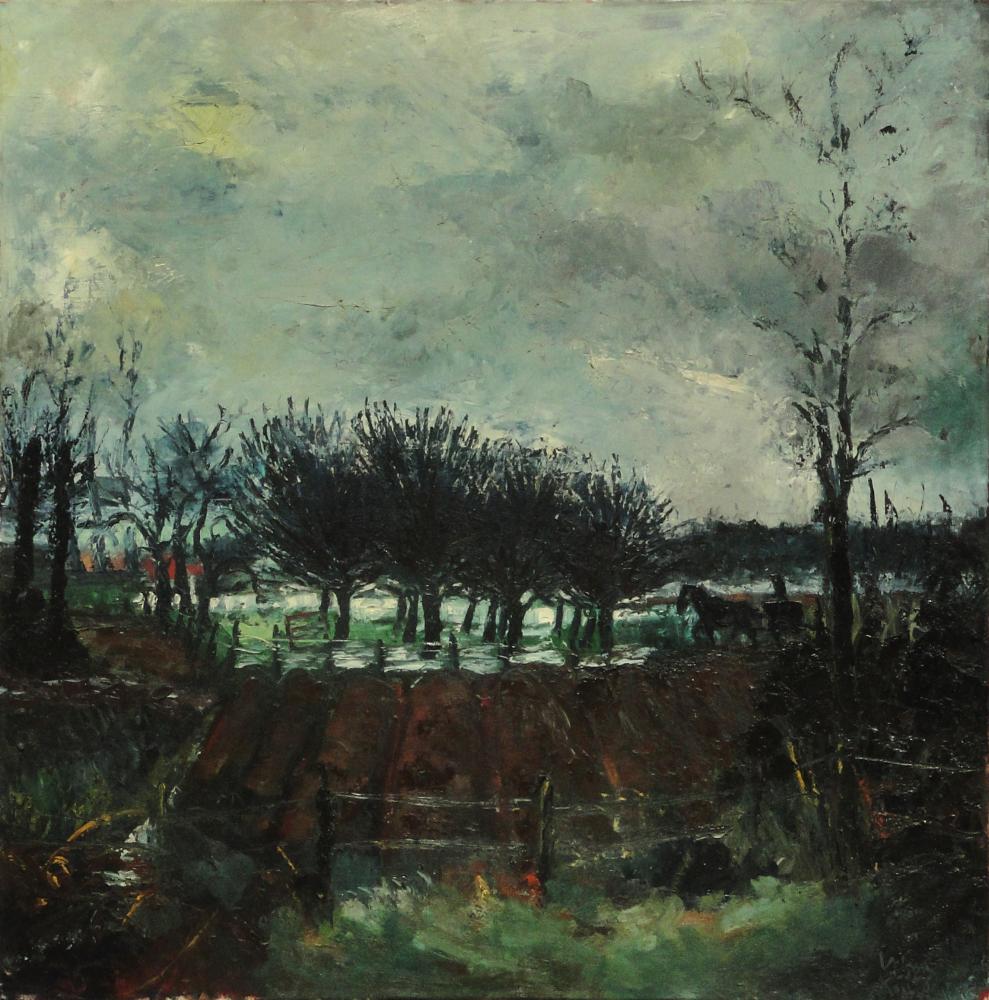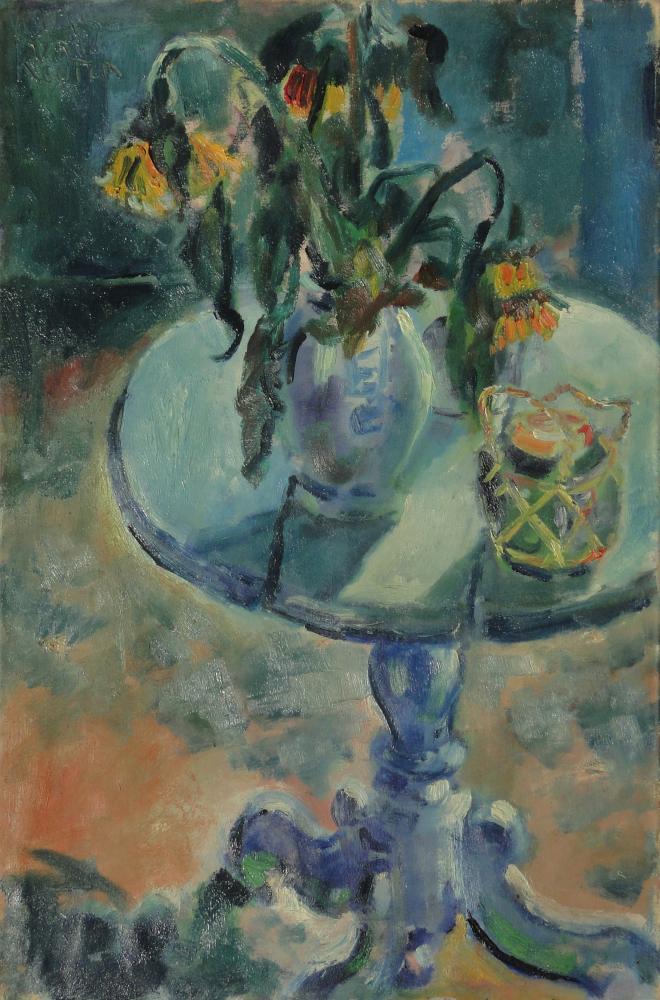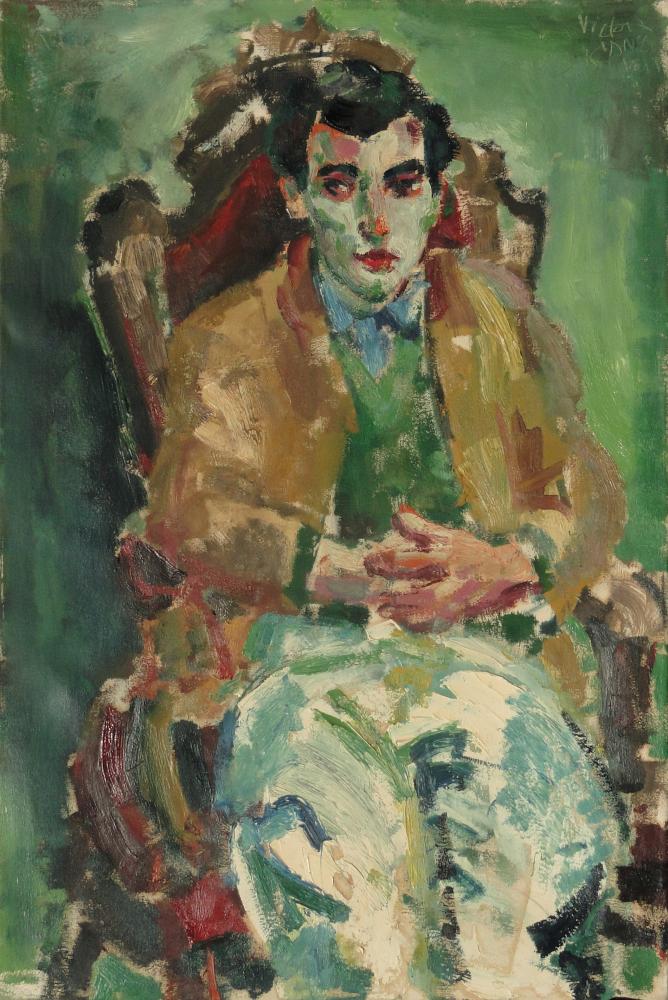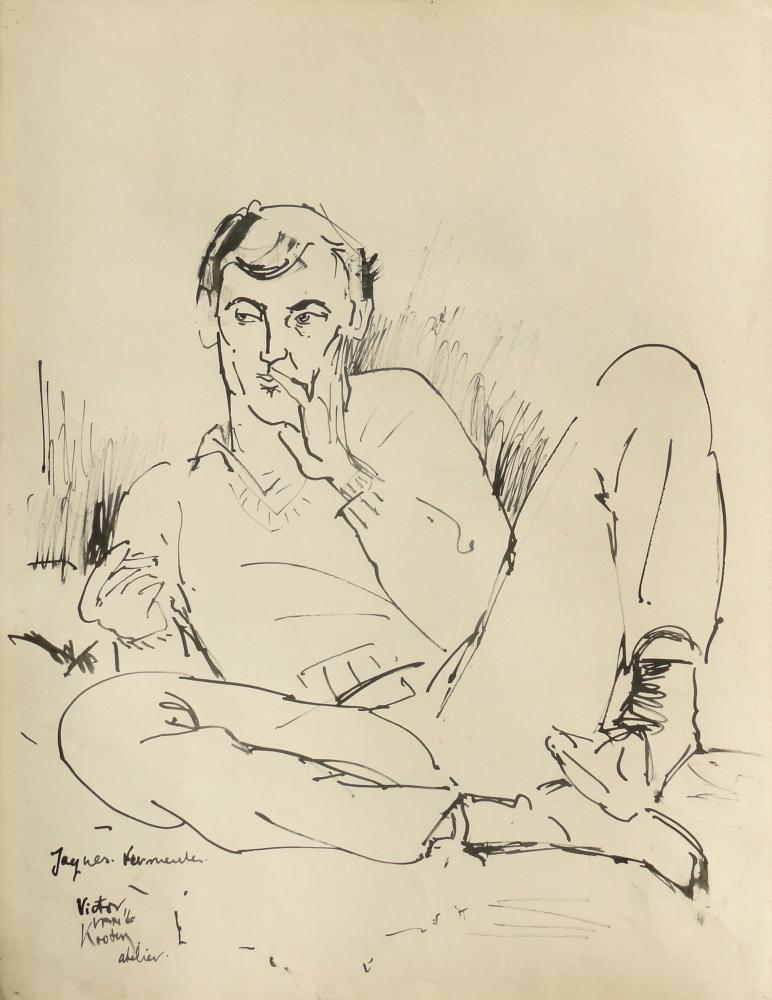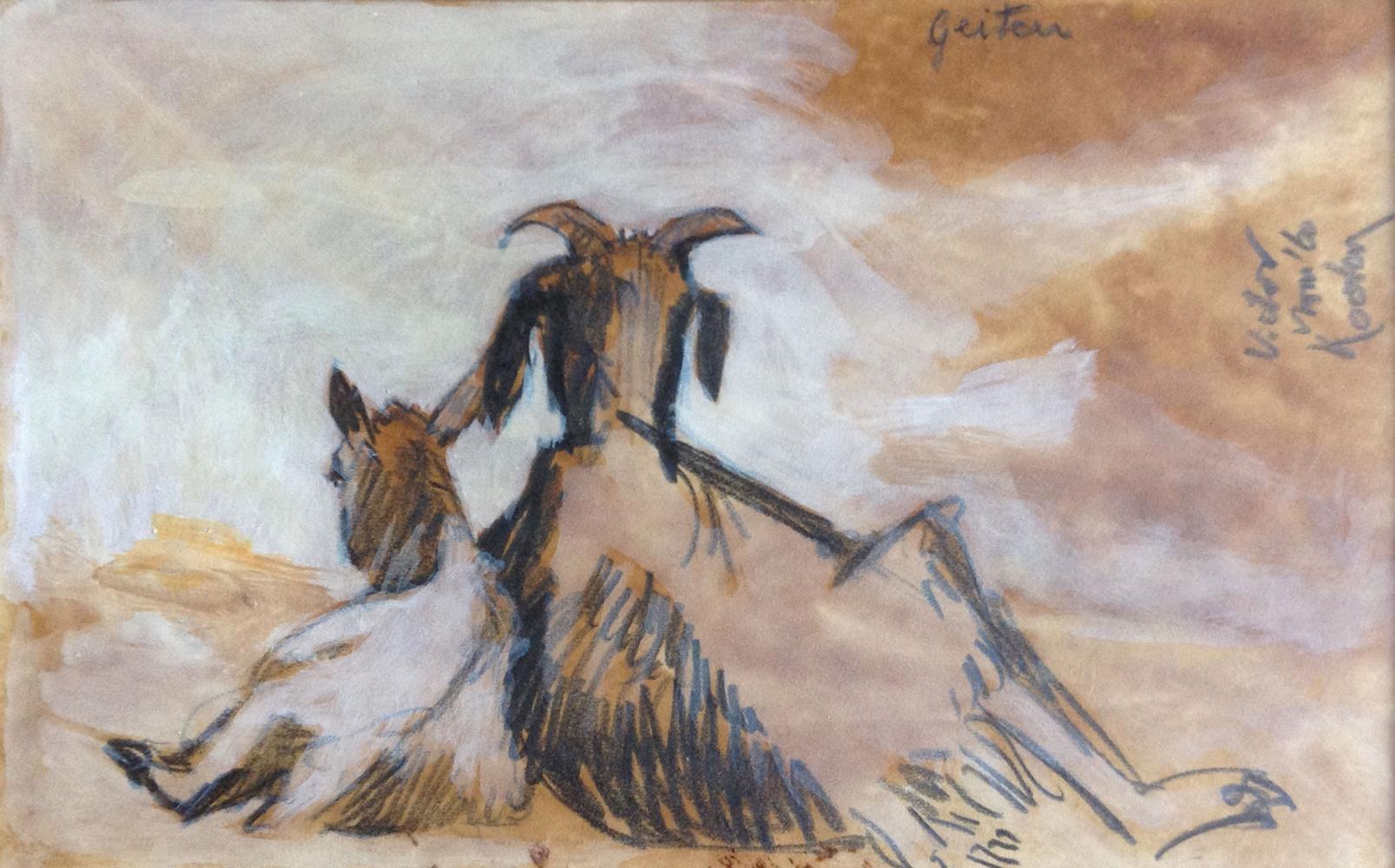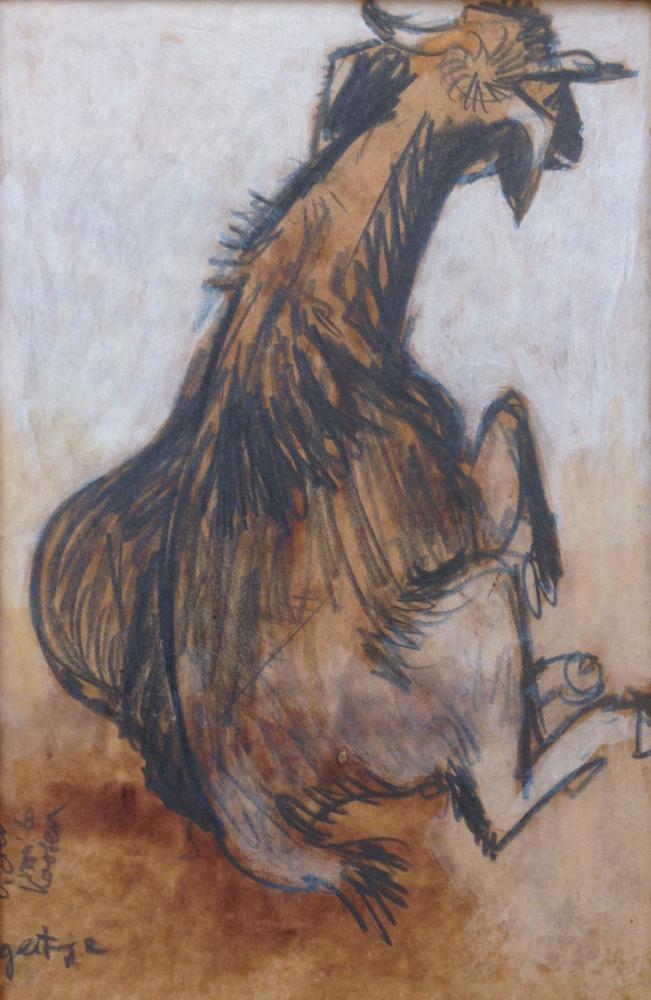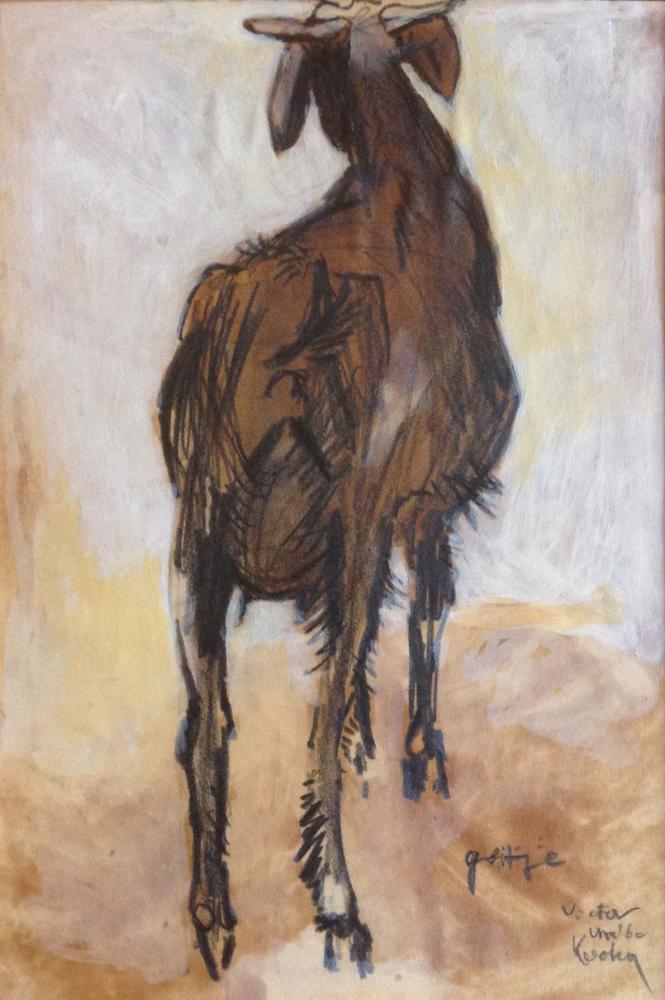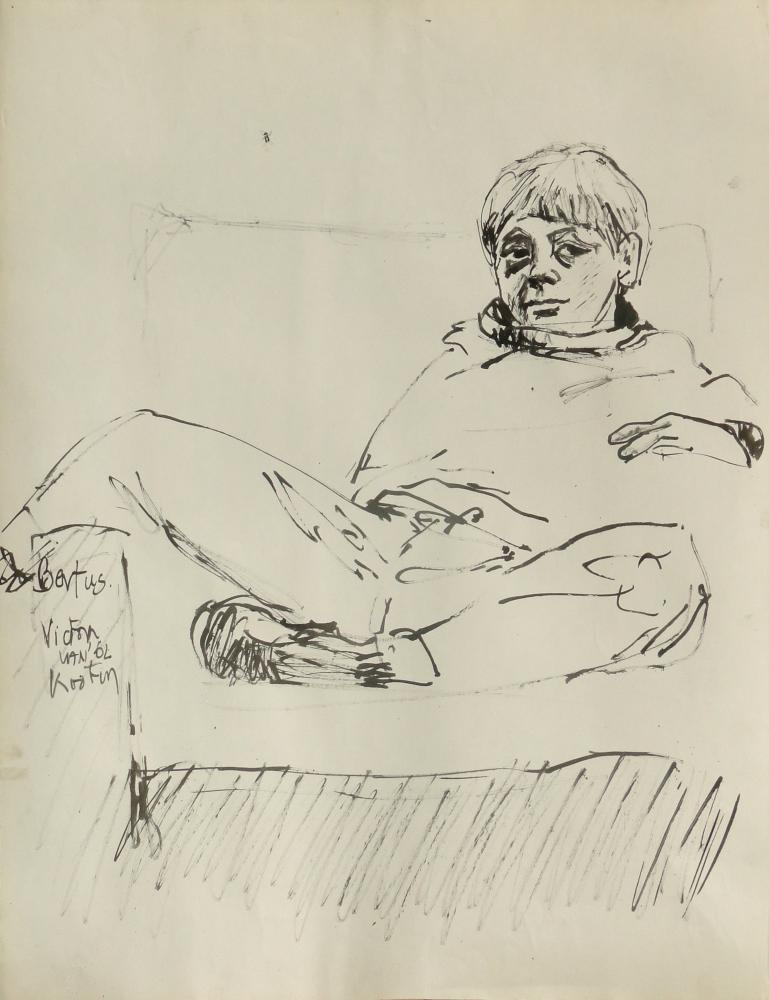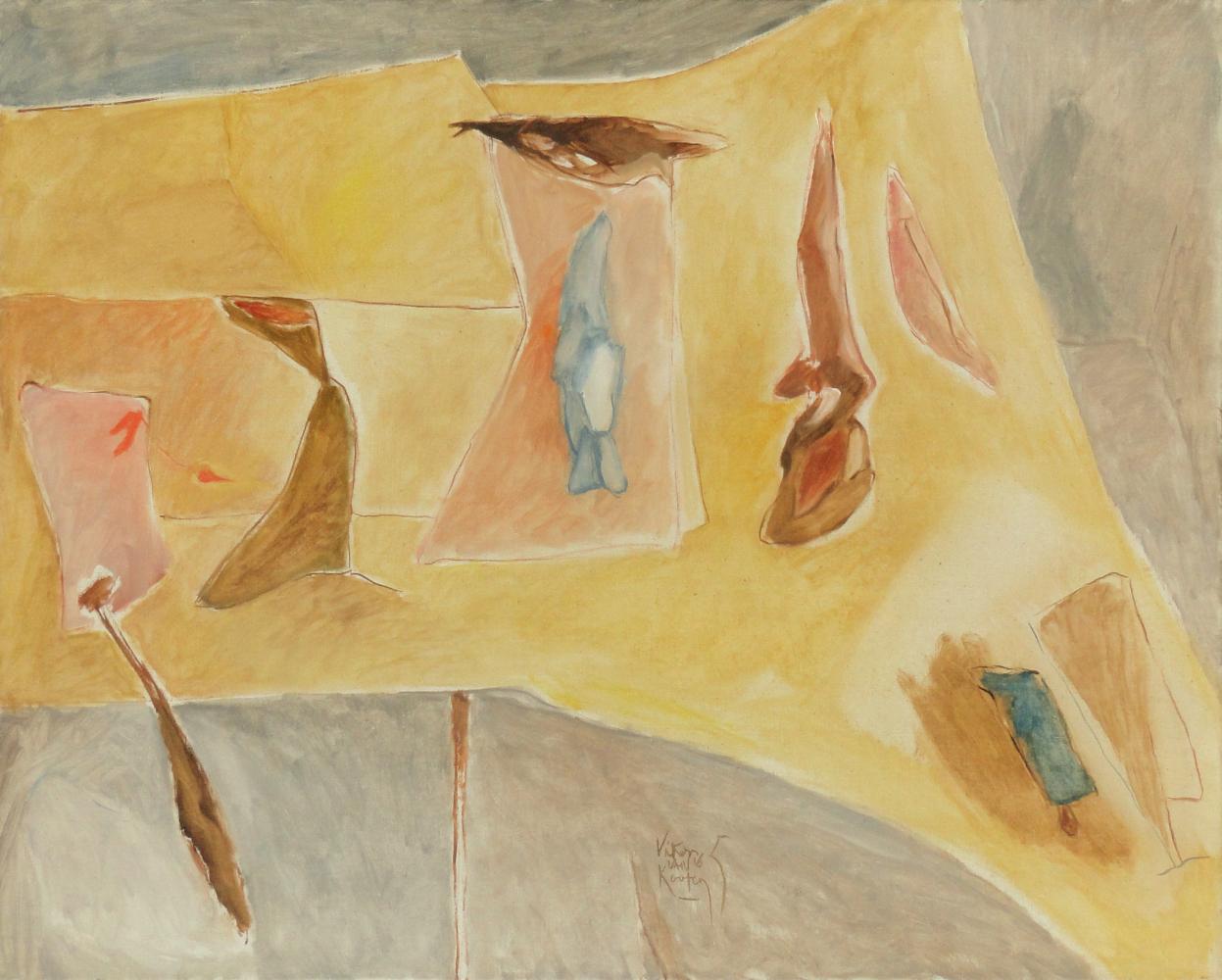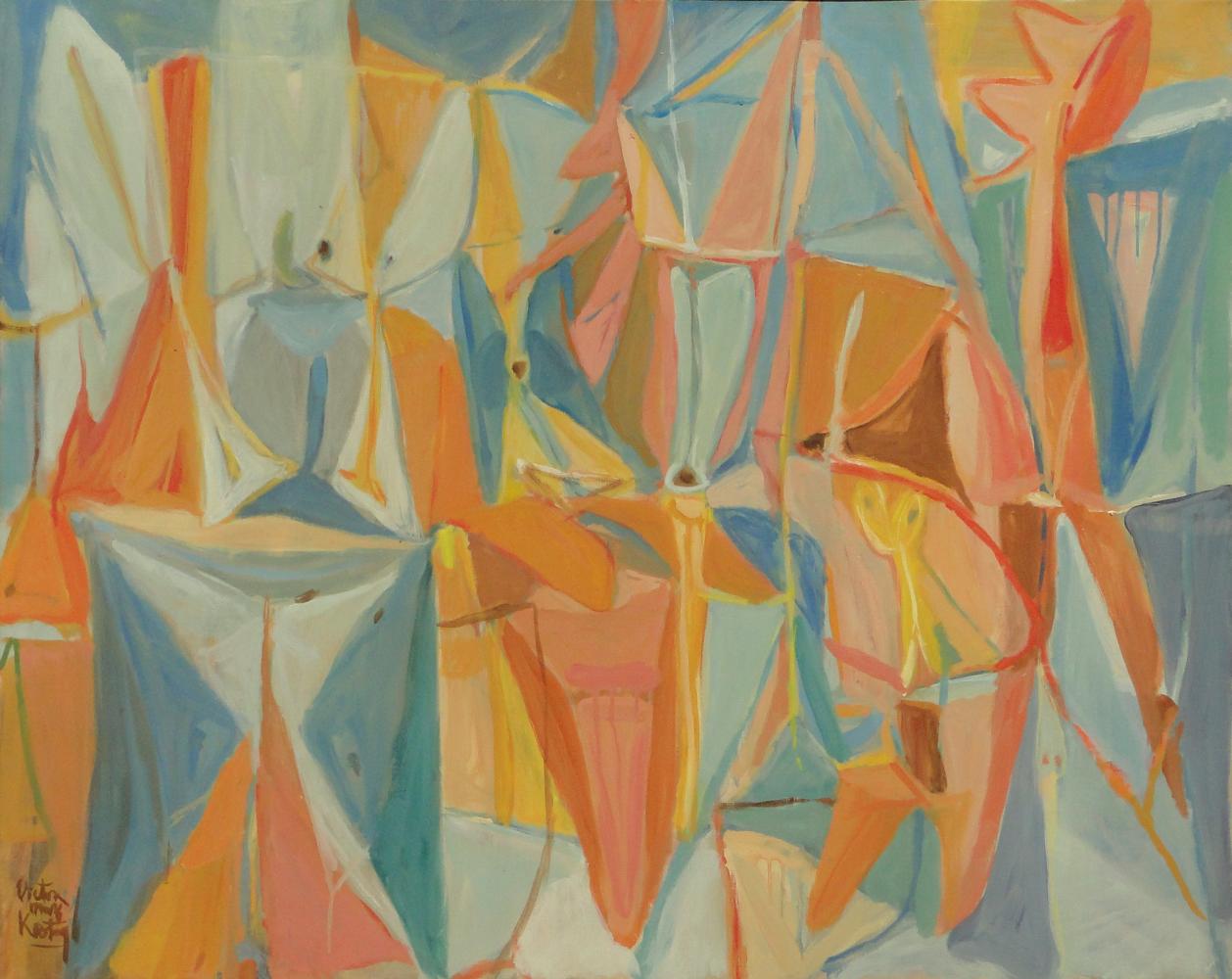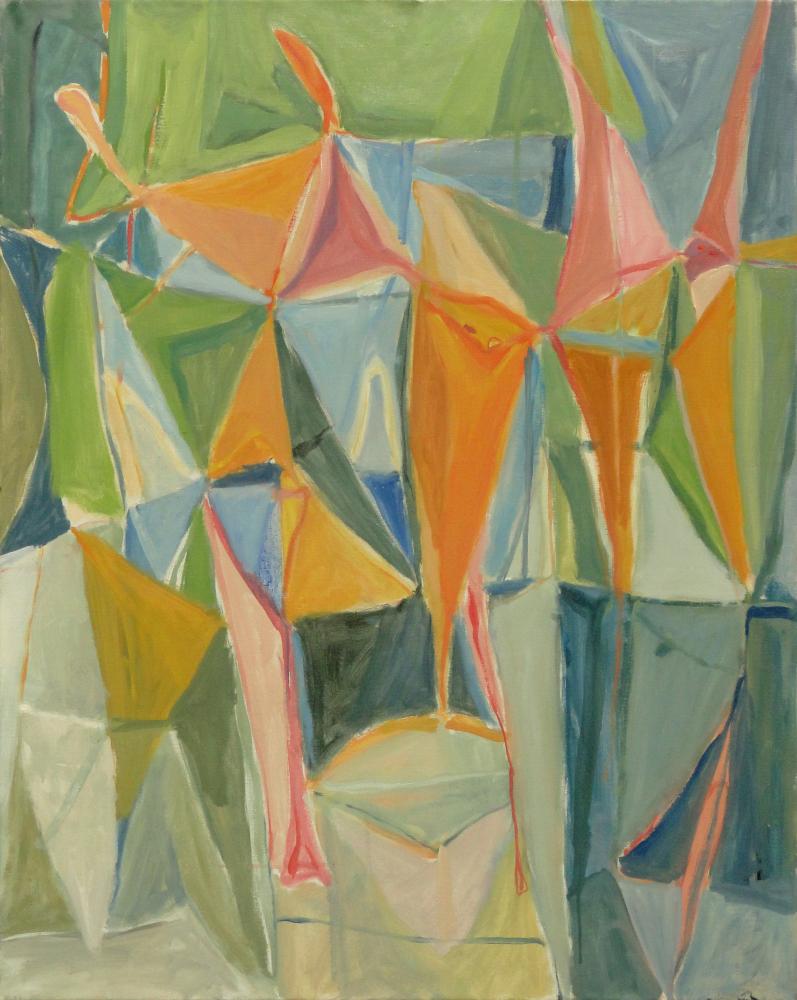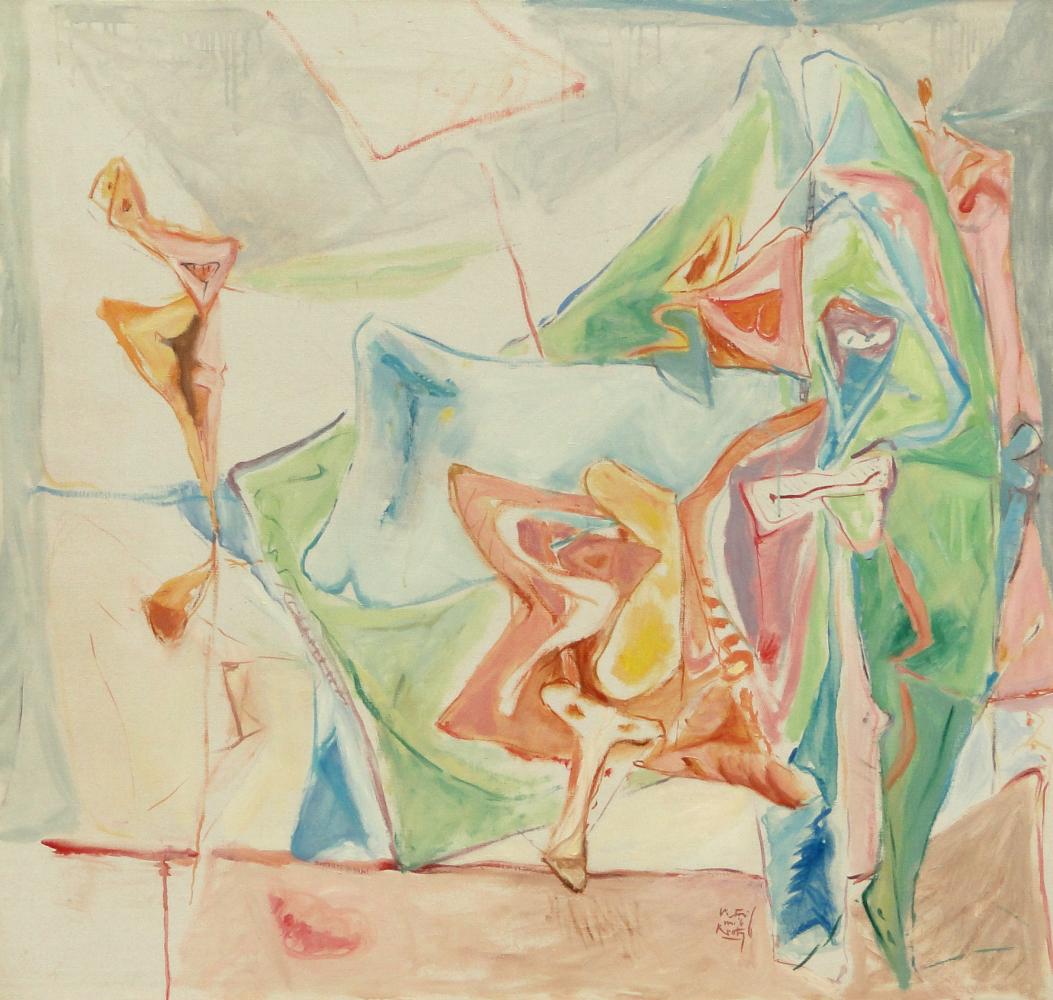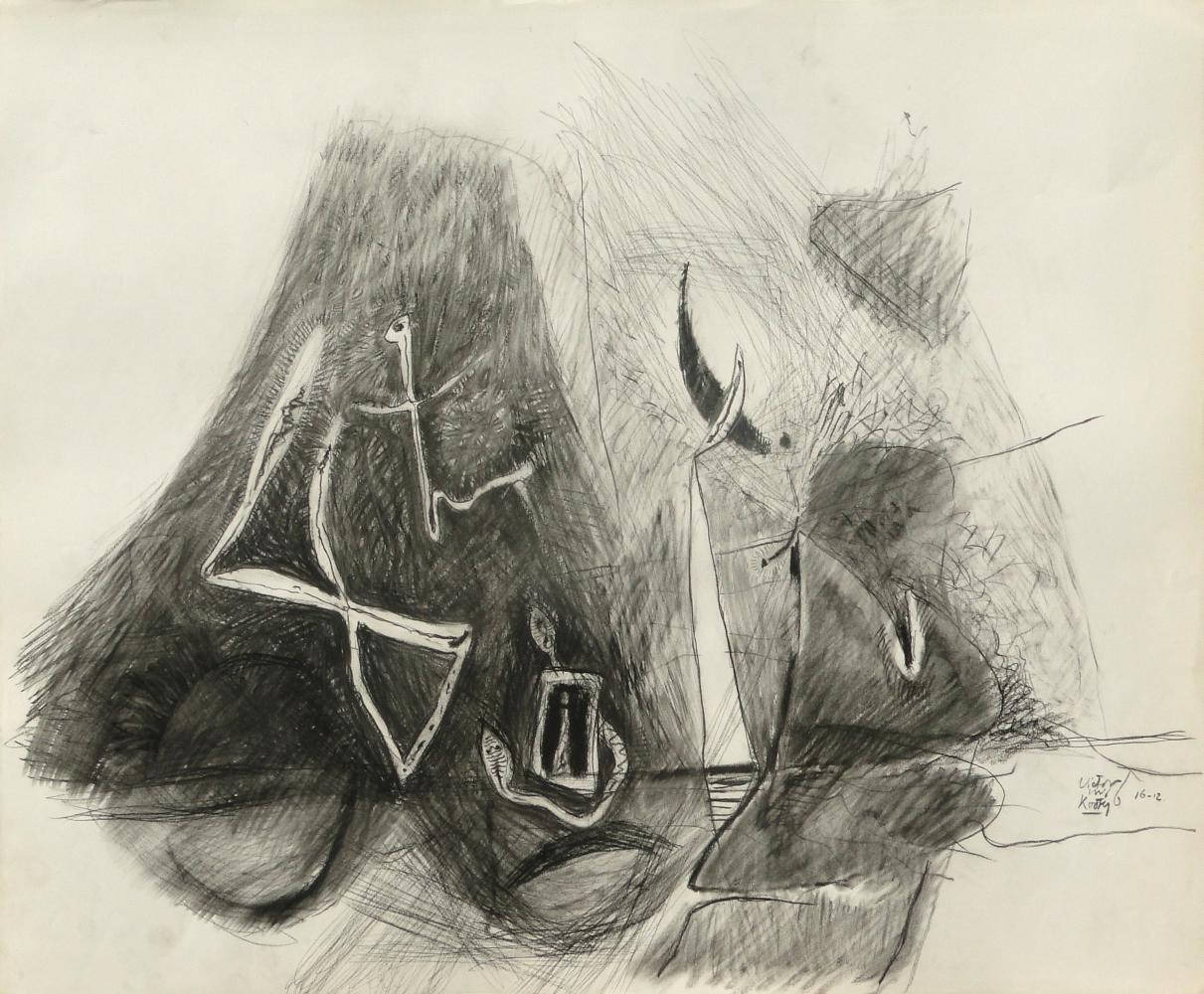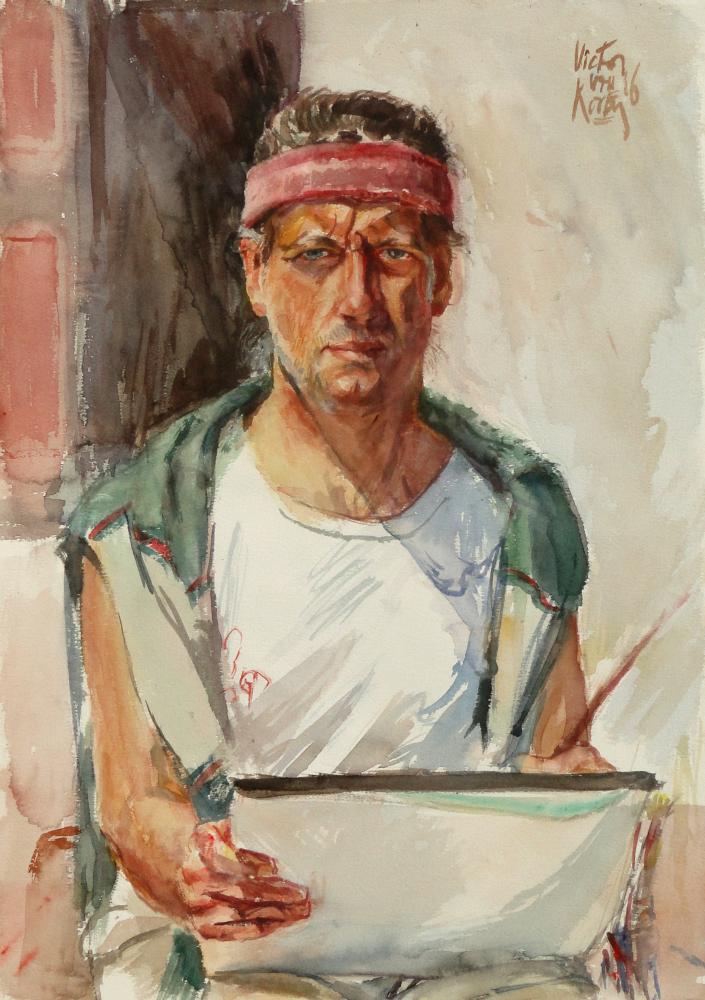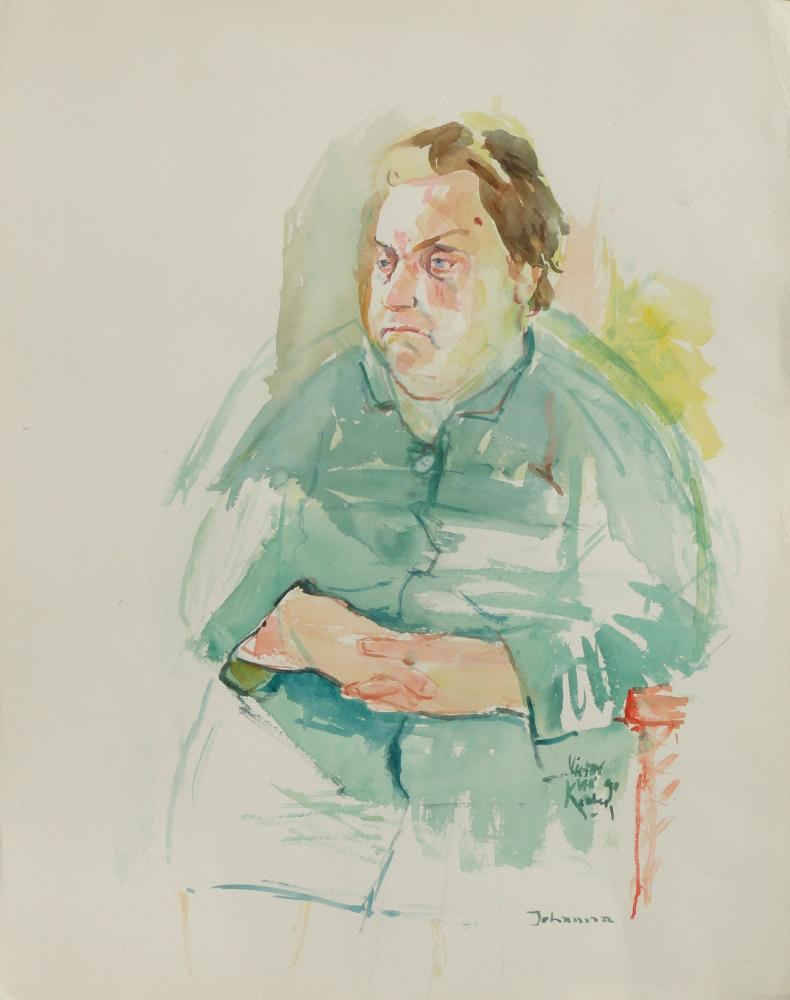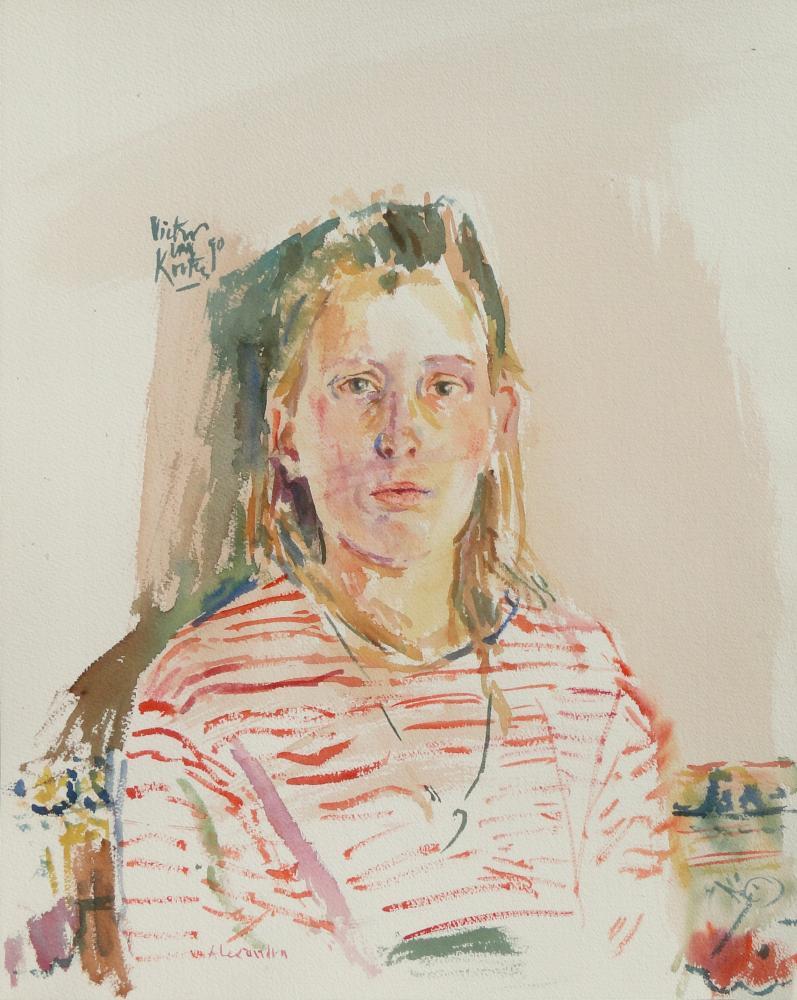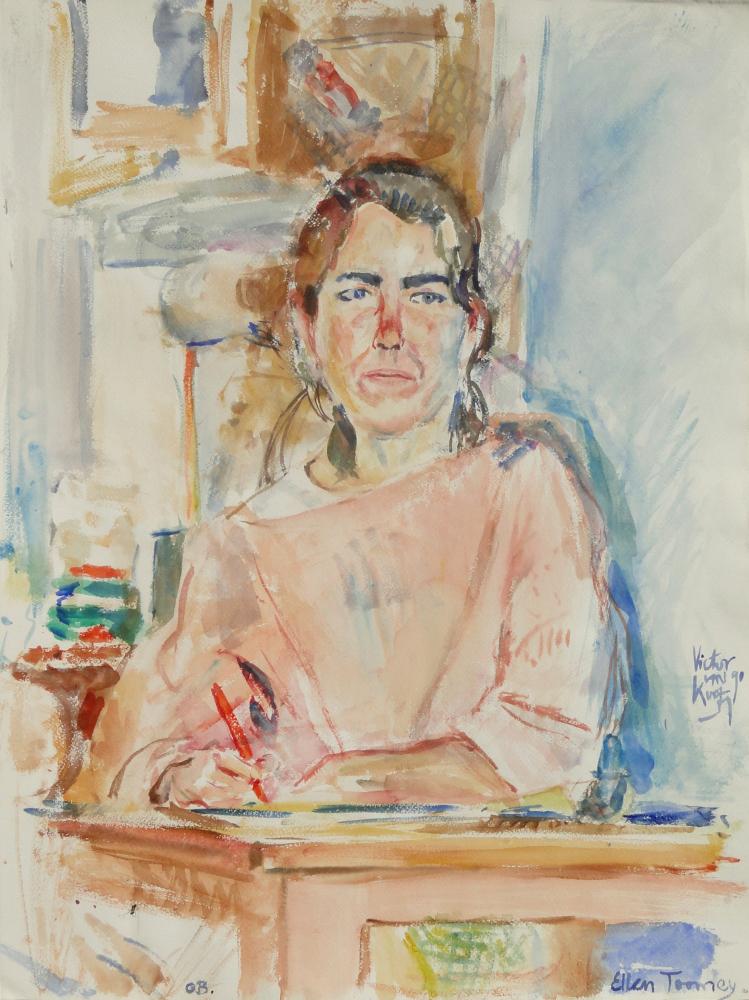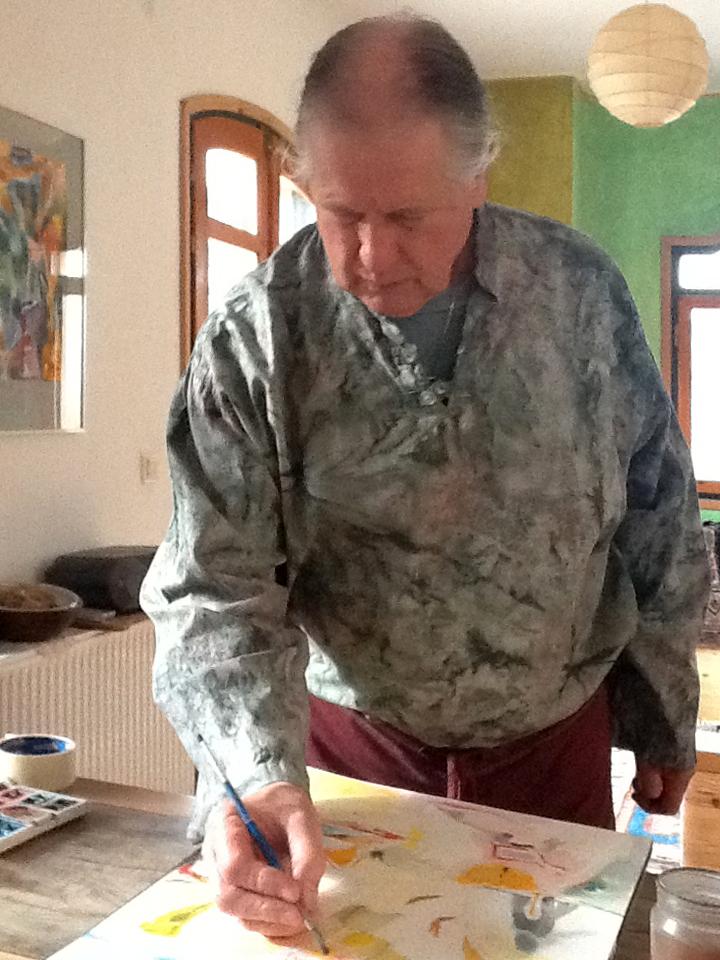
Born in Breda, Holland, on January 17 1940, just a few months before the outbreak of World War 2. He had an early urge to become a painter. His father's brother was an artist and not very successful, giving his parents a good reason to advise against this wish. In spite of that resistance he made up his mind at the age of 13.
At 18 he joined the art academy in Breda, but after one year left and rented a studio making his own explorations in painting and ceramic sculpting.
He drew his inspiration from nature and although it was easy for him to make portraits and landscapes, the main reason to paint was the magic lying hidden behind that visible world. He was drawn to folk tales and myths that pointed towards the "night world" where wishes are realized.
In his Breda studio he worked with abstract images for 7 years.
In his more recent watercolors his challenge to use shapes, colors, paint strokes, lines and dots enable him to let stories be born on paper, leading to a world of continuous change.
Since 2004 Victor lives and works in his home on Lesvos, Greece in the Eftalou Valley near Molyvos.
The challenge in painting for me is to respect the reality of paint and paper.
Unlikely to my more figurative work, where there is the temptation to force the paint into a suggestive imitation of what is presented to us as the "reality".
Recently it became a point for me to keep the paint the paint and use strokes and blotches, lines , colors and forms to express my inner reality. In fact: avoiding very fast gestures that come out of a personal habit, from the structure of my likes and dislikes, my ego. Or movements that result from a mental discussion and are too slow. How to stay clearly in the present state, in which a new world is born from under your brush. Looking with new born eyes.
Q. "When you are able to depict people, animals and landscapes in such a realistic way and, as I may add, being successful at it, why then make abstract work?"
A. "Well to me it is not totally satisfying to bend and force the paint into a perfect imitation of the existing world, for the paint looses its own nature, its own reality! Some earlier painters were very aware of that. Painters like Rembrandt van Rijn in his later work, Vincent Van Gogh and more recently Bram van Velde, were using the paint's own characteristics to express themselves with and showing their personal temperament in their brush strokes.
The deeper one connects with the creative field, turning away from the external realities, the more you will have to use the archetypical spheres to express one's feelings without borrowing recognizable forms that might just satisfy the knowing mind."
Video of the making of painting 2019-069
